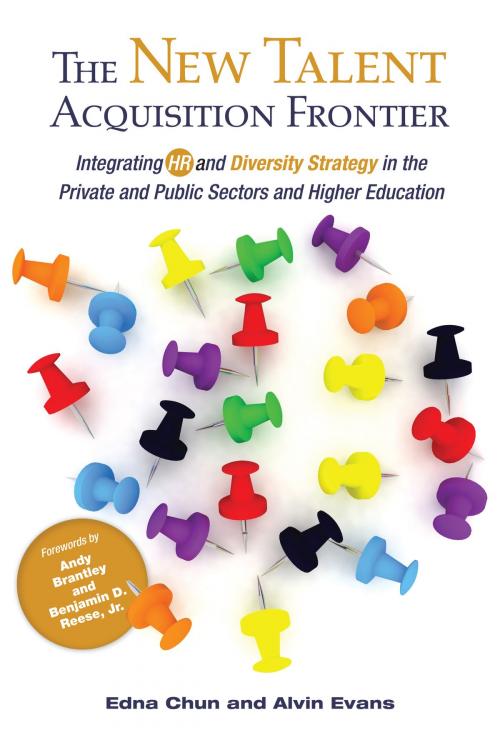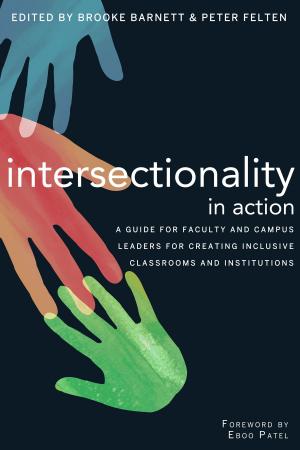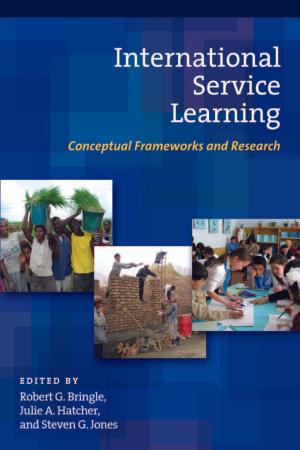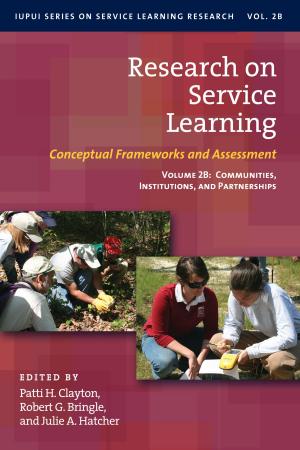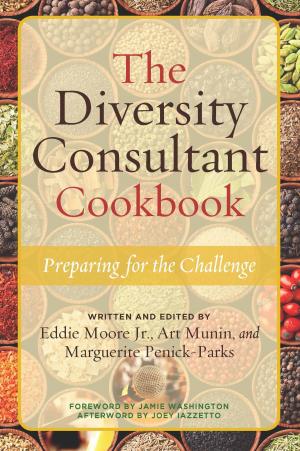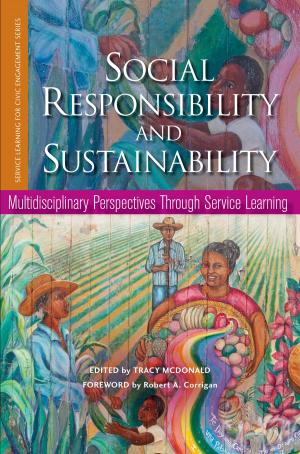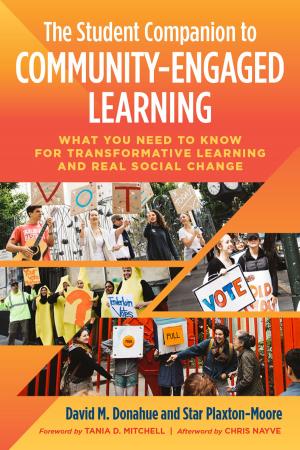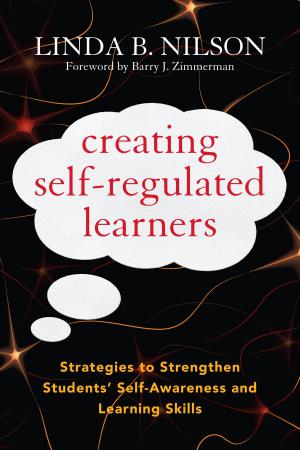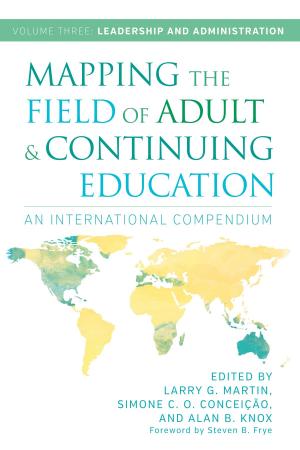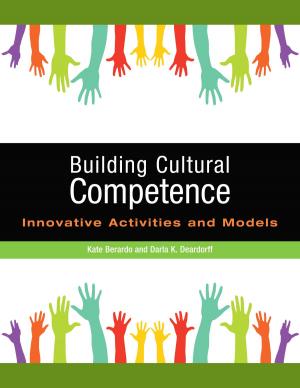The New Talent Acquisition Frontier
Integrating HR and Diversity Strategy in the Private and Public Sectors and Higher Education
Nonfiction, Reference & Language, Education & Teaching, Higher Education, Business & Finance, Human Resources & Personnel Management| Author: | Edna Chun, Alvin Evans | ISBN: | 9781620360866 |
| Publisher: | Stylus Publishing | Publication: | December 6, 2013 |
| Imprint: | Stylus Publishing | Language: | English |
| Author: | Edna Chun, Alvin Evans |
| ISBN: | 9781620360866 |
| Publisher: | Stylus Publishing |
| Publication: | December 6, 2013 |
| Imprint: | Stylus Publishing |
| Language: | English |
• Get practical tools to assess integrated HR/diversity strategic planning, and see why organizations are not making more diversity progress
• Develop specific performance indicators to track your progress in implementing synergistic HR/diversity approaches
• Case studies of SHRM, federal and state government, global corporations, and higher education illustrate systematic, integrated HR/diversity efforts
“The demographic transformation of society compels leaders to adapt. This book makes the business case for integrated diversity and HR initiatives and shows how many sectors, whether public or private and including higher education, can learn from one another. This book is an excellent synthesis of research and original case studies that provides an excellent start for all of us. Those who would lead would be well served by reading this volume.”—Frank H. Wu, Chancellor & Dean, University of California Hastings College of Law
For HR professionals and leaders, chief diversity officers, line managers, and executives in the private and public sectors and higher education, this book presents a systematic approach to integrating HR practices and strategic diversity initiatives to create the inclusive, high performance workforce that every enterprise and institution needs to succeed in an increasingly multicultural society and global marketplace.
The authors’ point of departure is that talent is the primary strategic asset necessary for organizational survival and success in a demographically diversifying and globally interconnected world. Organizations seeking to attain their full potential in this new talent frontier must optimize their human capital resources by the deliberate development of synergy between human resource (HR) and diversity programs. Failure to integrate and coordinate these two functions will erode organizational competitiveness, whether it is in developing new markets, products, programs, or services.
As the first book to provide a concrete roadmap to integrated HR and diversity strategy, the authors identify two critical practices: talent management through the orchestration of HR and diversity programs to enhance organizational capability by unleashing, mobilizing, nurturing, and sustaining the contributions of a diverse and talented workforce; and talent sustainability through the close integration of HR and diversity to continuously develop systems, structures, processes, and a culture that heighten employee commitment, engagement, and inclusion.
They further believe that there should be a commonality of practice across all types of organizations, and that each sector can learn from the others to accelerate its adaptation to today’s rapidly shifting national and global realities.
Based on the most current research and on interviews with HR and diversity leaders in major organizations, this book provides the reader with concrete strategies and practical tools for implementing a successful and sustainable talent management program. It also addresses common barriers to the development of synergistic HR and diversity strategy, and how to overcome them.
Given the evolutionary nature of the integration of HR and diversity, the authors present nine extensive case studies from all organizational sectors, as well as from the two leading Human Resource professional associations – the Society for Human Resource Management (SHRM) and the College and University Professional Association for Human Resources (CUPA-HR) – to illustrate the dynamic intersection between HR and diversity practices.
• Develop specific performance indicators to track your progress in implementing synergistic HR/diversity approaches
• Case studies of SHRM, federal and state government, global corporations, and higher education illustrate systematic, integrated HR/diversity efforts
“The demographic transformation of society compels leaders to adapt. This book makes the business case for integrated diversity and HR initiatives and shows how many sectors, whether public or private and including higher education, can learn from one another. This book is an excellent synthesis of research and original case studies that provides an excellent start for all of us. Those who would lead would be well served by reading this volume.”—Frank H. Wu, Chancellor & Dean, University of California Hastings College of Law
For HR professionals and leaders, chief diversity officers, line managers, and executives in the private and public sectors and higher education, this book presents a systematic approach to integrating HR practices and strategic diversity initiatives to create the inclusive, high performance workforce that every enterprise and institution needs to succeed in an increasingly multicultural society and global marketplace.
The authors’ point of departure is that talent is the primary strategic asset necessary for organizational survival and success in a demographically diversifying and globally interconnected world. Organizations seeking to attain their full potential in this new talent frontier must optimize their human capital resources by the deliberate development of synergy between human resource (HR) and diversity programs. Failure to integrate and coordinate these two functions will erode organizational competitiveness, whether it is in developing new markets, products, programs, or services.
As the first book to provide a concrete roadmap to integrated HR and diversity strategy, the authors identify two critical practices: talent management through the orchestration of HR and diversity programs to enhance organizational capability by unleashing, mobilizing, nurturing, and sustaining the contributions of a diverse and talented workforce; and talent sustainability through the close integration of HR and diversity to continuously develop systems, structures, processes, and a culture that heighten employee commitment, engagement, and inclusion.
They further believe that there should be a commonality of practice across all types of organizations, and that each sector can learn from the others to accelerate its adaptation to today’s rapidly shifting national and global realities.
Based on the most current research and on interviews with HR and diversity leaders in major organizations, this book provides the reader with concrete strategies and practical tools for implementing a successful and sustainable talent management program. It also addresses common barriers to the development of synergistic HR and diversity strategy, and how to overcome them.
Given the evolutionary nature of the integration of HR and diversity, the authors present nine extensive case studies from all organizational sectors, as well as from the two leading Human Resource professional associations – the Society for Human Resource Management (SHRM) and the College and University Professional Association for Human Resources (CUPA-HR) – to illustrate the dynamic intersection between HR and diversity practices.
• Get practical tools to assess integrated HR/diversity strategic planning, and see why organizations are not making more diversity progress
• Develop specific performance indicators to track your progress in implementing synergistic HR/diversity approaches
• Case studies of SHRM, federal and state government, global corporations, and higher education illustrate systematic, integrated HR/diversity efforts
“The demographic transformation of society compels leaders to adapt. This book makes the business case for integrated diversity and HR initiatives and shows how many sectors, whether public or private and including higher education, can learn from one another. This book is an excellent synthesis of research and original case studies that provides an excellent start for all of us. Those who would lead would be well served by reading this volume.”—Frank H. Wu, Chancellor & Dean, University of California Hastings College of Law
For HR professionals and leaders, chief diversity officers, line managers, and executives in the private and public sectors and higher education, this book presents a systematic approach to integrating HR practices and strategic diversity initiatives to create the inclusive, high performance workforce that every enterprise and institution needs to succeed in an increasingly multicultural society and global marketplace.
The authors’ point of departure is that talent is the primary strategic asset necessary for organizational survival and success in a demographically diversifying and globally interconnected world. Organizations seeking to attain their full potential in this new talent frontier must optimize their human capital resources by the deliberate development of synergy between human resource (HR) and diversity programs. Failure to integrate and coordinate these two functions will erode organizational competitiveness, whether it is in developing new markets, products, programs, or services.
As the first book to provide a concrete roadmap to integrated HR and diversity strategy, the authors identify two critical practices: talent management through the orchestration of HR and diversity programs to enhance organizational capability by unleashing, mobilizing, nurturing, and sustaining the contributions of a diverse and talented workforce; and talent sustainability through the close integration of HR and diversity to continuously develop systems, structures, processes, and a culture that heighten employee commitment, engagement, and inclusion.
They further believe that there should be a commonality of practice across all types of organizations, and that each sector can learn from the others to accelerate its adaptation to today’s rapidly shifting national and global realities.
Based on the most current research and on interviews with HR and diversity leaders in major organizations, this book provides the reader with concrete strategies and practical tools for implementing a successful and sustainable talent management program. It also addresses common barriers to the development of synergistic HR and diversity strategy, and how to overcome them.
Given the evolutionary nature of the integration of HR and diversity, the authors present nine extensive case studies from all organizational sectors, as well as from the two leading Human Resource professional associations – the Society for Human Resource Management (SHRM) and the College and University Professional Association for Human Resources (CUPA-HR) – to illustrate the dynamic intersection between HR and diversity practices.
• Develop specific performance indicators to track your progress in implementing synergistic HR/diversity approaches
• Case studies of SHRM, federal and state government, global corporations, and higher education illustrate systematic, integrated HR/diversity efforts
“The demographic transformation of society compels leaders to adapt. This book makes the business case for integrated diversity and HR initiatives and shows how many sectors, whether public or private and including higher education, can learn from one another. This book is an excellent synthesis of research and original case studies that provides an excellent start for all of us. Those who would lead would be well served by reading this volume.”—Frank H. Wu, Chancellor & Dean, University of California Hastings College of Law
For HR professionals and leaders, chief diversity officers, line managers, and executives in the private and public sectors and higher education, this book presents a systematic approach to integrating HR practices and strategic diversity initiatives to create the inclusive, high performance workforce that every enterprise and institution needs to succeed in an increasingly multicultural society and global marketplace.
The authors’ point of departure is that talent is the primary strategic asset necessary for organizational survival and success in a demographically diversifying and globally interconnected world. Organizations seeking to attain their full potential in this new talent frontier must optimize their human capital resources by the deliberate development of synergy between human resource (HR) and diversity programs. Failure to integrate and coordinate these two functions will erode organizational competitiveness, whether it is in developing new markets, products, programs, or services.
As the first book to provide a concrete roadmap to integrated HR and diversity strategy, the authors identify two critical practices: talent management through the orchestration of HR and diversity programs to enhance organizational capability by unleashing, mobilizing, nurturing, and sustaining the contributions of a diverse and talented workforce; and talent sustainability through the close integration of HR and diversity to continuously develop systems, structures, processes, and a culture that heighten employee commitment, engagement, and inclusion.
They further believe that there should be a commonality of practice across all types of organizations, and that each sector can learn from the others to accelerate its adaptation to today’s rapidly shifting national and global realities.
Based on the most current research and on interviews with HR and diversity leaders in major organizations, this book provides the reader with concrete strategies and practical tools for implementing a successful and sustainable talent management program. It also addresses common barriers to the development of synergistic HR and diversity strategy, and how to overcome them.
Given the evolutionary nature of the integration of HR and diversity, the authors present nine extensive case studies from all organizational sectors, as well as from the two leading Human Resource professional associations – the Society for Human Resource Management (SHRM) and the College and University Professional Association for Human Resources (CUPA-HR) – to illustrate the dynamic intersection between HR and diversity practices.
